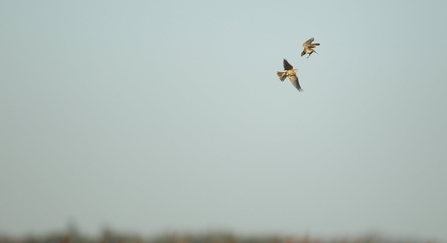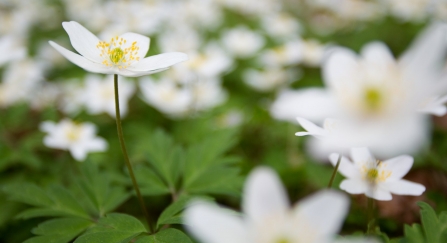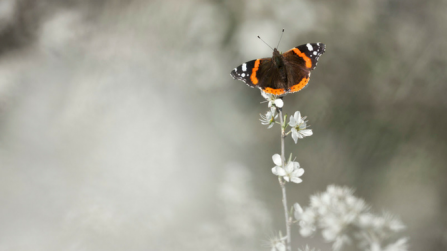
European hare boxing by Andy Rouse/2020VISION
Brown hares by Andy Rouse/2020VISION

European hare boxing by Andy Rouse/2020VISION
It really is spring when you see boxing hares! If you haven’t seen one yet check out these facts and tips explaining how, where and when to spot Britain’s fastest wild land mammal, capable of speeds of up to 45 mph.

Chiffchaff by Margaret Holland
Chiffchaffs, the little brown birds that call their name ‘chiff-chaff, chiff-chaff’, are one of the first migrants to return from Africa.
Some birds are even starting to spend the winters in the UK as the weather becomes milder. They’re very similar in appearance to willow warblers so their calls are the best way to tell the apart. Listen out for them in woodlands, parks and areas of scrub.
Have a listen to the chiffchaff:

Wheatear by Amy Lewis
These attractive birds return from their African winters and tend to pass through our area, heading further north or west to breed. The name wheatear comes from the Saxon word for rump because of the white markings on their rumps.

Skylarks by Luke Massey/2020VISION
The song of a skylark is unmistakable, pouring down from high above, it's even inspired many works of literature and music. Sadly the number of skylarks is rapidly declining in the UK due to habitat loss as farming becomes more intensive.
BBOWT's Wells Farm is a working farm that's run in harmony with wildlife providing habitat and food for a variety of birds, small mammals and insects.

Brimstone by Neil Phillips
Look out for brimstones, the large yellow butterflies that may have given ‘butter-flies’ their name.
They emerge from their winter hiding places on warmer days and are a sure sign that spring is one its way. Other butterflies that spend the winter as adults include peacocks and red admirals so keep an eye out for these too.

On sunny days in early spring you may catch a glimpse of grass snakes or adders basking in the sunlight. They’ve spent the winter tucked away, safe from predators and are now emerging and making the most of warmer weather.
Look out for bats emerging on warmer evenings to look for insects to eat. The common pipistrelle bat is the most common bat in the UK and can often be seen in towns as well as rural areas. They usually hibernate through the winter months but may emerge to feed when there are warmer nights.

Wood anemone by Mark Hamblin/2020VISION
Carpets of wood anemones indicate areas of ancient woodland because these delicate plants spread very slowly, perhaps as little as six feet in a hundred years.
The leaves have a musky smell, giving wood anemones one of their other common names ‘smell fox’.

Cuckoo pint by Kate Morel and BjornS
This strange looking plant is fairly common in woodlands and along hedgerows, look for curls of green leaves pushing up through the earth at this time of year.
It has a variety of common names, including cuckoo pint and jack-in-the-pulpit. The flower is pollinated by flies and later in the year produces bright red berries, which are toxic to humans.
Did you know they have starchy tubers that were used in the production of stiff ruffs in days gone by?

Unusually for many trees the blossom on blackthorn appears before the leaves, giving rise to the phrase ‘blackthorn winter’ when hedgerows are filled with blossom which can look like a covering of snow.
Blackthorn is an important plant for wildlife throughout the year. The delicate white flowers are a useful source of nectar for insects in early spring. The thorny branches are ideal places for birds to safely nest and young blackthorn is essential for the rare brown hairstreak butterfly, which lays its eggs there. Later in the year sloes, the blackthorn’s fruit, provide food for birds.
Sign up below to receive the latest news from BBOWT, tips about how you can help wildlife, plus information on how you can get involved.